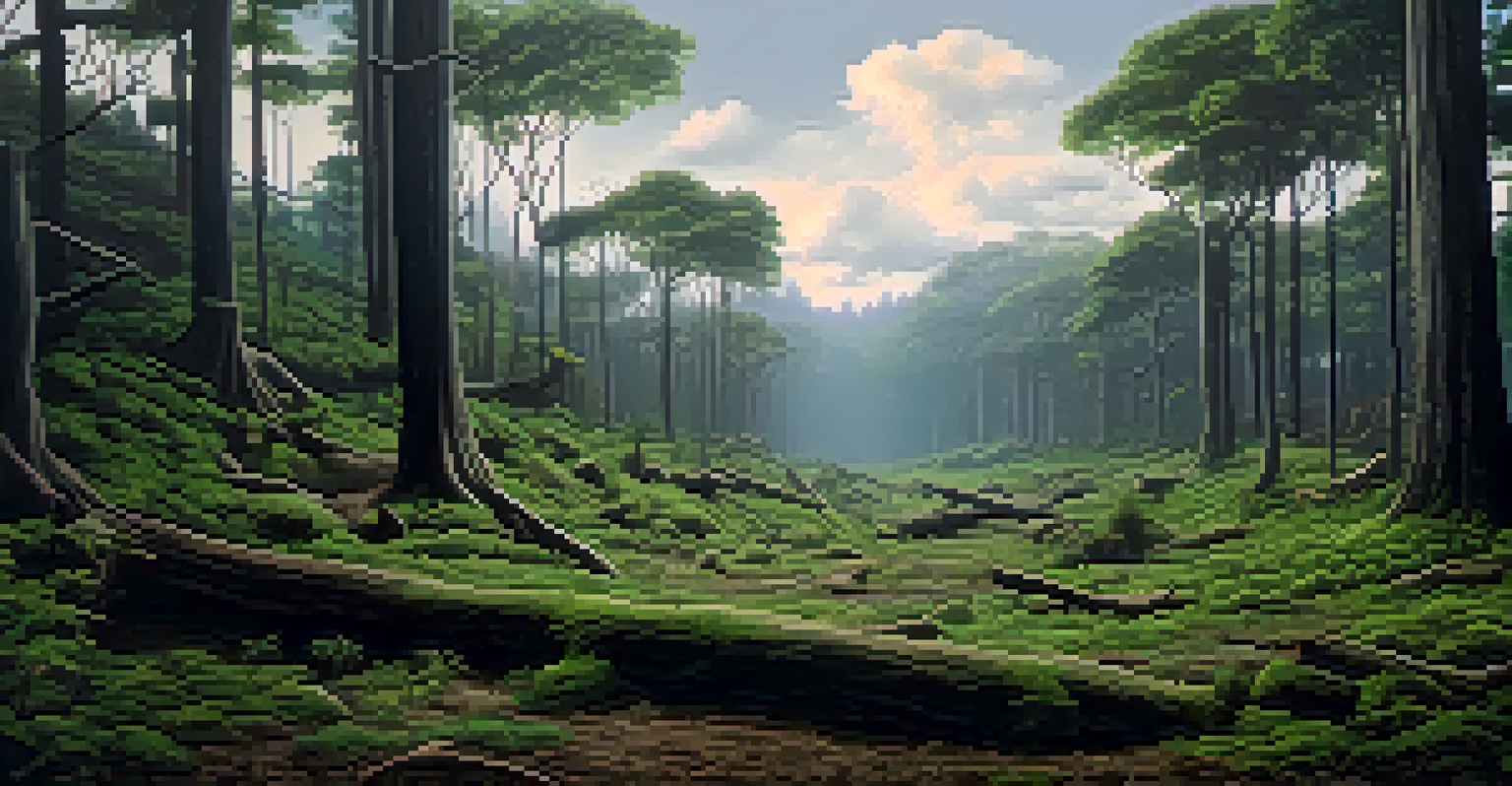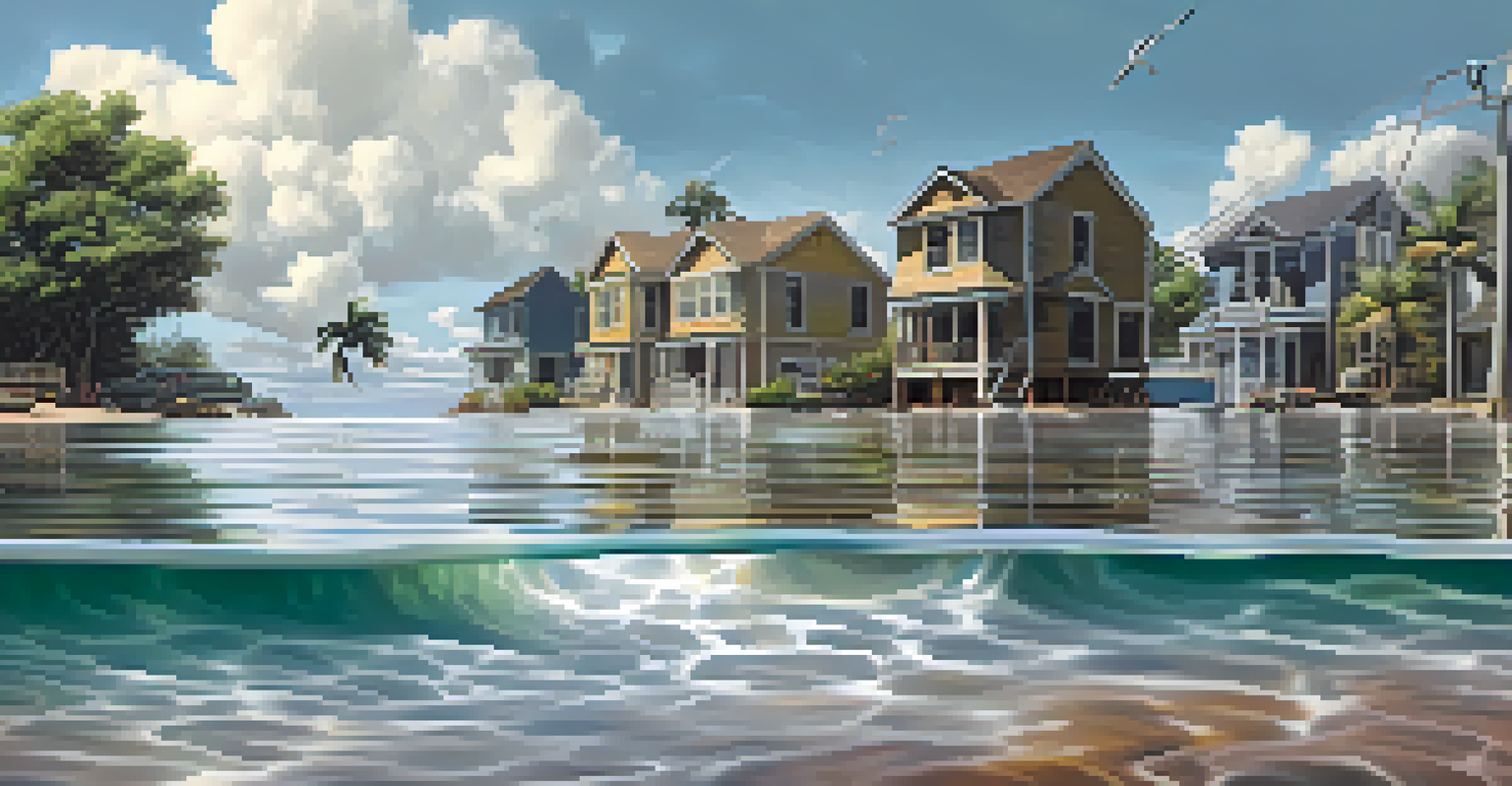Virtual Reality Art: A New Medium for Environmental Activism

Understanding Virtual Reality Art and Its Impact
Virtual reality (VR) art is an immersive medium that allows artists to create experiences that transport viewers into different worlds. Unlike traditional art forms, VR art engages multiple senses, creating a deeper emotional connection. This unique quality makes it a powerful tool for conveying complex messages, especially in the realm of environmental activism.
Art is not a mirror held up to reality, but a hammer with which to shape it.
As environmental issues become increasingly urgent, artists are leveraging VR to raise awareness and provoke thought. By immersing audiences in virtual ecosystems, they can experience the beauty of nature and, conversely, the devastating impacts of climate change. This sensory experience can inspire action in ways that a flat image or video might not.
For instance, by simulating deforestation or rising sea levels, VR art allows viewers to witness these changes firsthand. This can create a sense of urgency that motivates individuals to engage with environmental causes, making VR a compelling medium for activism.
The Role of Immersion in Environmental Storytelling
Immersion is one of the key elements that sets VR art apart from other forms of media. When viewers don a VR headset, they are not just observers; they become participants in the narrative. This level of engagement can foster empathy and understanding about environmental issues, prompting viewers to reflect on their own impact on the planet.

For example, a VR experience that places users in a coral reef could show them the vibrancy of underwater life, then transition to a barren scene affected by climate change. This stark contrast can leave a lasting impression and encourage viewers to consider their role in protecting these ecosystems.
VR Art Engages Senses for Activism
Virtual reality art creates immersive experiences that connect viewers emotionally to environmental issues, fostering awareness and urgency.
By making the experience personal, artists can effectively bridge the gap between awareness and action. When individuals feel connected to the environment through immersive storytelling, they are more likely to support conservation efforts and advocate for sustainable practices.
Case Studies: Successful VR Art Projects in Activism
Several VR art projects have successfully highlighted environmental issues and spurred activism. One notable example is 'The Elephant in the Room,' which immerses viewers in the habitat of endangered elephants, showcasing their struggle against poaching and habitat loss. This project not only educates participants but also encourages donations to wildlife conservation efforts.
We do not inherit the earth from our ancestors, we borrow it from our children.
Another impactful project, 'Waves of Change,' allows users to experience the effects of rising sea levels on coastal communities. By walking through a virtual village that gradually submerges, viewers are confronted with the reality of climate change in a visceral way. Such projects demonstrate the potential of VR art to inspire tangible action and change.
These case studies illustrate how effective VR can be in communicating urgency and importance, making environmental activism accessible and relatable. As more artists embrace this medium, the potential for impactful storytelling continues to grow.
The Technology Behind Virtual Reality Art
Creating VR art involves a blend of artistic talent and technological expertise. Artists use software like Blender or Unity to build immersive environments, often incorporating soundscapes and interactive elements. This requires not only creativity but also a solid understanding of how VR technology works, which can be a barrier for some artists.
However, as technology advances and becomes more accessible, more artists are exploring VR as a medium. Tools and platforms are emerging that simplify the process of creating VR experiences, allowing artists to focus more on their message. This democratization of technology opens the door for diverse voices in environmental activism.
Immersion Fosters Environmental Empathy
By placing users in impactful scenarios, VR art enhances empathy and inspires reflection on individual environmental responsibilities.
Moreover, the growing community of VR artists collaborates and shares knowledge, further enriching the field. As these artists experiment with new techniques and ideas, the possibilities for impactful environmental storytelling expand.
Challenges Facing Virtual Reality Art in Activism
Despite its potential, VR art faces several challenges in the realm of environmental activism. One major hurdle is accessibility; not everyone has access to VR headsets or the technology required to experience these artworks. This limits the audience and can undermine the message, making it crucial for artists to find ways to reach a broader demographic.
Additionally, creating a compelling VR experience requires significant resources, including time, funding, and expertise. Not all artists have the means to produce high-quality VR art, which can lead to a disparity in representation within the medium. This challenge underscores the need for support systems and funding for marginalized artists.
Lastly, the rapidly changing nature of technology means that artists must constantly adapt to new tools and platforms. Staying current can be overwhelming, but it’s essential for ensuring that their work remains relevant and impactful in a fast-paced digital landscape.
The Future of VR Art in Environmental Activism
As technology continues to evolve, the future of VR art in environmental activism looks promising. We can expect to see more innovative projects that push the boundaries of storytelling and audience engagement. With advancements in VR technology, artists will be able to create even more immersive and interactive experiences that resonate with viewers on a personal level.
Furthermore, as climate change and environmental issues remain at the forefront of global discussions, the demand for impactful activism will only increase. VR art can play a vital role in shaping public perception and inspiring action, making it an important tool for social change. Artists will likely collaborate with scientists and activists to create experiences grounded in research and real-world data.
Challenges in Accessing VR Art
Despite its potential, VR art faces barriers such as accessibility and resource limitations, which can hinder its reach and impact.
Ultimately, the intersection of technology, art, and activism presents an exciting opportunity for collective action. As more artists embrace VR, we can anticipate a wave of creativity that not only informs but also empowers individuals to advocate for the planet.
Getting Involved: How You Can Support VR Art Initiatives
Supporting VR art initiatives focused on environmental activism can take many forms. One way is by attending exhibitions and events that showcase this work, whether in-person or virtually. Engaging with these projects helps raise awareness and demonstrates to artists that there is an audience for their efforts.
Another impactful way to get involved is through social media. Sharing VR art experiences or contributing to discussions about the intersection of art and environmental issues can amplify these messages. By spreading the word, you can help bring attention to important causes and inspire others to take action.

Lastly, consider supporting organizations that fund or promote VR art projects. Donations, volunteering, or even just spreading awareness about these initiatives can make a significant difference. Every effort counts in the fight for environmental protection, and supporting VR art is a creative way to contribute.